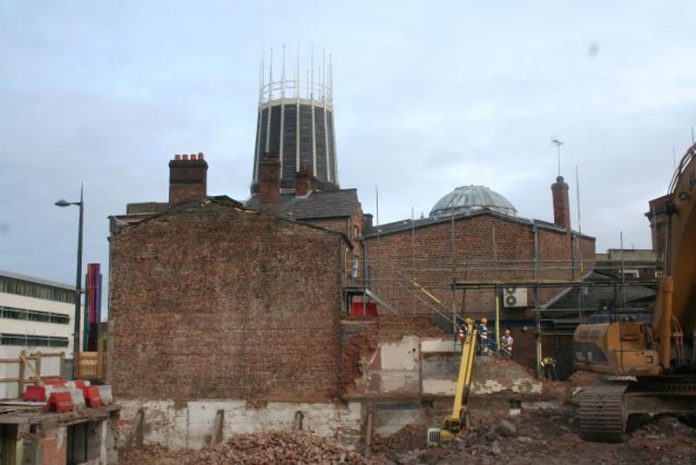Oxford Archaeology was involved in the project to rebuild Liverpool’s Everyman Theatre, which has won this year’s Riba Stirling Prize.
The building of the first Everyman Theatre was originally a Non-Conformist chapel known as Hope Hall, constructed in 1834, and much of this build still survived up to the time of demolition for the new theatre. It was then used as an Anglican church, and from 1853 onwards as a public meeting hall, although no physical evidence of this phase was identified during the investigation. In 1910, the structure was converted for use as a cinema, and elements of the auditorium survived until recently from this period, including the early projection box and some of the seating.
In 1964, Hope Hall Cinema was modified to become the Everyman Theatre with the addition of an apron stage, offices and dressing rooms on the ground floor. In 1977, major changes were made to the building, substantially altering the auditorium, the cloakroom facilities and the west-facing façade.
The new Everyman Theatre draws on the long history of the building, not only by reusing every brick from the original structure, but also by incorporating a sense of the first theatre’s ‘grubbiness’ in its radical design. The next phase in the history of the Everyman Theatre begins.


